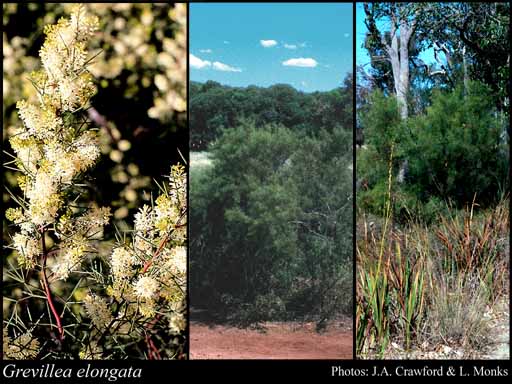- Reference
- Grevillea 1:175 (1994)
- Conservation Code
-
Threatened
A taxon name retains its ‘Threatened’ status until a new name has been officially endorsed and appears in the Gazettal Notice.
- Naturalised Status
- Native to Western Australia
- Name Status
- Current
Shrub, 1.5-2 m high. Fl. white-cream, Oct. Gravelly clay, sandy clay, sand. Road verges, swamps, creek banks.

Scientific Description
Shrubs, 1-3 m high; branchlets glabrous, not glaucous. Leaves alternate, 25-65 mm long, hairy; lamina flat, once divided or twice or more divided, tripartitely divided, divided to the midrib; lobes 10-40 mm long, 0.8-1 mm wide, the margins revolute, enclosing the lower surface of the leaf blade, forming a groove either side of the midvein. Inflorescences axillary or terminal, white; pedicels 2-3 mm long. Perianth 2-3 mm long; tepals all free after flower opens, glabrous; ovary glabrous, stipitate, the stipe 1-1.5 mm long; pistil 3-5 mm long, white, pollen presenter conical, style glabrous. Follicles glabrous, not viscid, dehiscent, 8 mm long. Flowers in October, November or December. Occurs in the South-west (SW) Botanical Province(s), in the Swan Coastal Plain (SWA) or Jarrah Forest (JF) IBRA subregion(s). : Conservation code Threatened (T).
Distribution
- IBRA Regions
- Swan Coastal Plain.
- IBRA Subregions
- Perth.
- Local Government Areas (LGAs)
- Busselton.